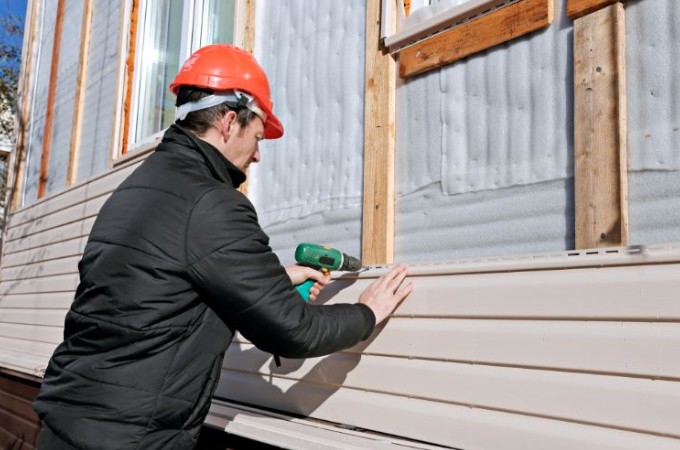
How Often Should You Replace Siding on a House? Signs It’s Time
Your home’s siding does more than just give it a clean, finished look—it protects it from harsh weather, moisture, pests, and more. Siding doesn’t last forever like any other part of your home’s exterior. Knowing when to replace it can prevent damage, improve energy efficiency, and boost your home’s value.
Many homeowners don’t think about siding until there’s a visible problem. But waiting too long can lead to costly repairs. Understanding the typical lifespan of siding and the warning signs of wear can help you take action before major issues arise.
If you’re considering replacing siding on your house in Rhode Island, it’s especially important to understand how local climate conditions, such as salty air, heavy snow, and strong coastal winds, can affect siding materials over time.
Typical Lifespan of Common Siding Materials
The type of siding you have plays a big role in how often it will need to be replaced. Here’s a look at the average lifespans of the most common siding materials:
- Vinyl Siding: Typically lasts 20–30 years. While low-maintenance, it can crack or fade with prolonged sun exposure.
- Fiber Cement Siding: One of the most durable options, with a 30–50 years lifespan.
- Wood Siding: Beautiful but higher maintenance. It can last 20–40 years with proper care, but is more vulnerable to rot and pests.
- Aluminum Siding: Lasts about 30–40 years but can dent easily and may fade.
- Engineered Wood or Composite Siding: Can last 25–35 years with less maintenance than traditional wood.
Even if your siding hasn’t reached the end of its expected lifespan, damage or poor installation can shorten its durability. Regular inspections can help you catch early issues.
Signs It’s Time to Replace Siding on a House
1. Cracking, Warping, or Bubbling
Cracked or warped siding can let moisture into your home, leading to mold, rot, and insulation damage. Bubbling or blistering often signals that water is trapped beneath the surface.
2. Fading or Discoloration
While some fading is normal over time, severe discoloration may mean the siding’s protective finish breaks down. This can shorten its lifespan and hurt your home’s curb appeal.
3. High Energy Bills
If your heating or cooling bills have increased, your siding might be blamed. Damaged or outdated siding can let air escape, forcing your HVAC system to work harder.
4. Frequent Painting
Needing to repaint your siding every few years could be a sign that it’s deteriorating. Most quality siding holds paint for 8 to 10 years or longer.
5. Signs of Rot or Mold
Wood siding, in particular, is prone to rot if not properly sealed and maintained. Mold or mildew growing on or beneath your siding is also a red flag that moisture is getting in.
6. Loose or Missing Pieces
High winds or poor installation can loosen siding panels. If this becomes a recurring issue, upgrading to a more secure and durable material might be necessary.
7. Interior Wall Damage
Peeling paint, warped drywall, or water stains inside your home can signal that the exterior siding no longer keeps moisture out.
Why Timing Matters
Waiting too long to replace siding on a house can lead to structural problems that are expensive to repair. Damaged siding allows water to seep into your walls, leading to mold, rot, and even foundation issues. Salt and moisture can accelerate this process in coastal areas like Rhode Island, making regular siding evaluations even more important.
On the other hand, proactive siding replacement can:
- Improve your home’s insulation.
- Boost resale value.
- Give your house a fresh, modern look.
- Prevent larger repair costs later on.
New siding products often come with improved technology, like UV resistance and better insulation, that make them a smart upgrade.
Can You Replace Just a Section of Siding?
In some cases, yes. If damage is limited to a small area, patching or replacing just a few panels may be enough. This is often done after a storm or accident damages one side of the house.
However, patchwork isn’t always ideal. New siding may not match your current material due to fading and weathering. Also, if the same issue keeps happening, like frequent cracking or moisture problems, replacing the full exterior may be more cost-effective.
How to Extend the Life of Your Siding
While siding eventually needs replacement, you can extend its life properly. Here are a few tips:
- Wash siding annually to remove dirt, mold, and mildew.
- Inspect regularly for cracks, warping, or pest activity.
- Seal or paint wood siding every few years.
- Trim back trees and shrubs to avoid scratching or moisture buildup.
- Address moisture issues near the foundation or roof promptly.
Routine maintenance can keep your siding in better shape for longer and help you avoid early replacement.
Final Thoughts
Knowing when to replace siding on a house is part of being a smart homeowner. While siding doesn’t need frequent attention, ignoring the signs of wear can lead to costly repairs and energy inefficiencies. Whether your siding is past its prime or just starting to show its age, staying informed will help you make the right call at the right time.
If your home shows signs of damage or you’re ready for a fresh new look, Rhode Island Siding & Exteriors is here to help. Their experienced team offers expert guidance and high-quality installation services for homeowners who want the best results. Contact them today to schedule a consultation and learn more about replacing siding on your house in Rhode Island with confidence.
